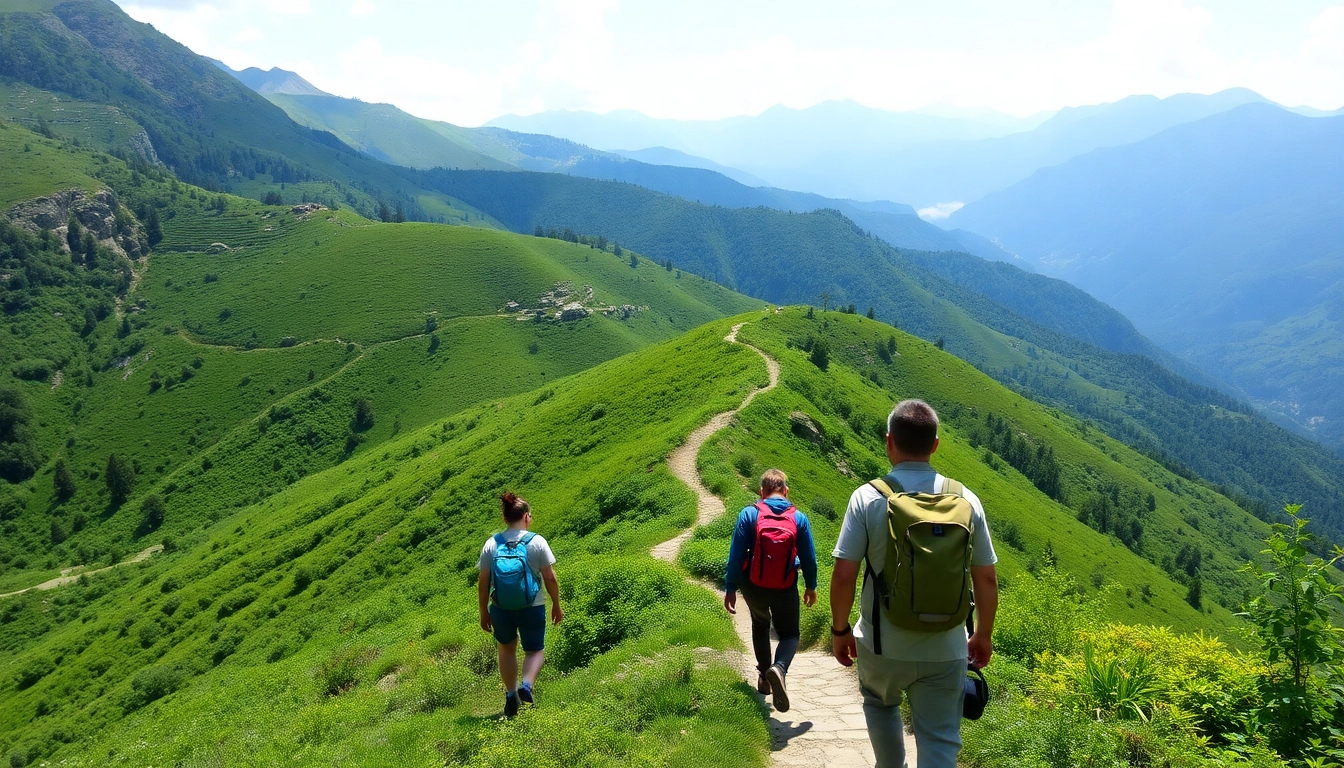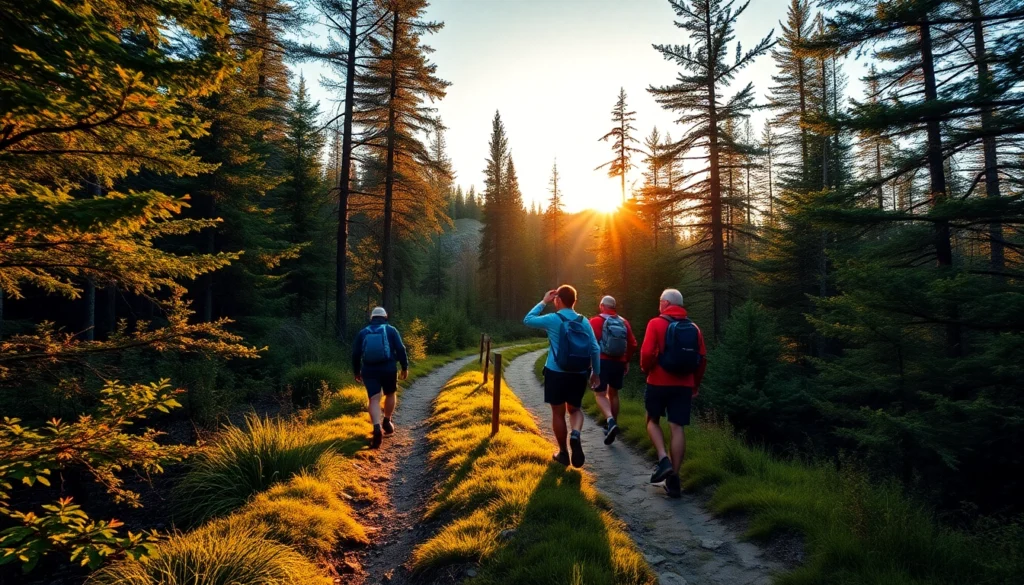Understanding Guided Treks: Definition and Key Benefits
What Is a Guided Trek and How Does It Work?
A guided trek is an organized outdoor adventure where participants embark on a journey through natural landscapes under the supervision of experienced guides. These treks are designed to combine exploration, learning, and adventure, providing a structured yet immersive experience in the wilderness. Whether traversing mountain trails, trekking through dense forests, or navigating remote terrains, a guided trek ensures safety, route management, and expert insights into the environment.
For those seeking a memorable experience in Indonesia, especially in scenic locations such as Lombok, a guided trek offers an ideal way to explore pristine landscapes with confidence and depth.
The operation of a guided trek involves pre-planned routes, logistical support, safety measures, and local expertise. Guides are typically seasoned outdoor professionals equipped with extensive knowledge of the terrain, flora, fauna, and cultural insights. They lead groups through designated trails, ensure adherence to safety protocols, provide educational commentary, and assist with navigation. Depending on the trek’s difficulty and duration, guides may also coordinate accommodations, meals, equipment, and emergency response plans.
Advantages of Choosing a Guided Trek Over Independent Hiking
Opting for a guided trek over venturing solo or independently offers numerous benefits, especially for travelers unfamiliar with the region or those seeking a hassle-free adventure. Key advantages include:
- Safety and Security: Guides are trained to handle emergencies, navigation challenges, and environmental hazards, minimizing risks.
- Local Expertise: Guides enhance the experience with cultural, historical, and ecological insights, enriching your understanding of the destination.
- Logistical Convenience: All arrangements such as permits, accommodations, meals, and transportation are managed seamlessly.
- Group Dynamics and Social Connection: Sharing a trek fosters camaraderie, making the journey more enjoyable and memorable.
- Access to Remote or Restricted Areas: Guides can secure permissions and navigate terrains that might be inaccessible or complex for independent travelers.
- Enhanced Learning and Engagement: Guided experiences often include educational components, wildlife sightings, and cultural interactions that add depth to the adventure.
For instance, in regions like Lombok, where diverse ecosystems and cultural sites abound, guided treks enable travelers to explore safely and meaningfully, maximizing discovery while minimizing logistical and safety concerns.
Common Features of Professional Guided Trekking Experiences
Professional guided treks usually encompass several hallmark features that distinguish them from informal hikes. These include:
- Experienced Guides: Certified, knowledgeable, and adept at delivering safety briefings, route navigation, and cultural storytelling.
- Pre-Organized Itineraries: Structured schedules that balance adventure, rest, and sightseeing, tailored to the group’s fitness and interests.
- Health and Safety Equipment: First aid kits, communication devices, and safety gear to respond to emergencies.
- Environmental Conservation: Responsible trekking practices, including Leave No Trace principles to minimize ecological impact.
- Customizable Levels: Routes cater to different skill levels, from beginner-friendly walks to challenging multi-day expeditions.
Such features ensure a smooth, educational, and safe experience, allowing participants to immerse themselves fully in the environment and culture. Reputable operators in Indonesia often include these features as standard, providing reassurance for travelers seeking adventure without compromise.
Planning Your Guided Trek: Essential Considerations
Selecting the Right Trekking Route in Indonesia
Indonesia boasts a rich tapestry of diverse landscapes suitable for all trekking preferences, from volcanic climbs to lush jungle walks. When planning a guided trek in Indonesia, consider:
- Destination Goals: Are you seeking challenging peaks like Mount Rinjani or cultural treks through villages? Or perhaps nature-focused adventures in Lombok’s waterfalls and forests?
- Route Difficulty: Match the trek with your physical fitness and experience. Some routes may require mountaineering skills, while others are accessible to beginners.
- Duration and Pace: Decide between short day hikes and multi-day expeditions. Longer treks require additional planning for rest, acclimatization, and supplies.
- Environmental Conditions: Weather influences the best seasons; typically, dry seasons offer more stable trekking conditions.
- Local Regulations and Conservation: Choose operators that respect local environment rules and contribute to sustainable tourism.
An example includes trekking to the summit of Mount Rinjani, Indonesia’s second-highest volcano, which offers stunning caldera views but demands good physical conditioning and careful planning.
What to Pack for a Guided Trek in Nature Adventures
Proper packing significantly impacts your trekking experience. Essentials include:
- Clothing: Moisture-wicking base layers, insulating layers for cool mornings, waterproof jacket, sturdy hiking boots, and a hat for sun protection.
- Gear: Trekking backpack, sleeping bag (if multi-day), trekking poles, headlamp or flashlight, and personal navigation tools (map, compass).
- Safety and Health: First aid kit, insect repellent, sunscreen, Personal medications, water purification tablets, and high-energy snacks.
- Documents: Permits, ID, travel insurance details, and copies of emergency contacts.
Because Indonesia’s tropical climate can be unpredictable, packing versatile clothing and lightweight gear is recommended. Additionally, always confirm packing requirements with your guide or tour operator.
Best Seasons and Timing for Guided Treks in Lombok
The timing of your trek can influence its success and enjoyment. Lombok, Indonesia, experiences tropical weather patterns, with the dry season spanning from May to September, generally considered the optimal time for trekking. During this period:
- Rainfall is minimal, reducing trail erosion and landslide risks.
- Visibility and scenic views are at their best, especially on volcanic summits.
- Local festivities and cultural ceremonies often coincide with dry season months, enriching your experience.
The wet season, from October to April, brings heavier rains, which can make trails slippery, and some routes may be temporarily inaccessible. It’s vital to consult with local guides about current conditions before planning your trek.
Choosing the Perfect Guided Trek: Tips and Recommendations
How to Find Reputable Guided Trek Operators in Indonesia
Selecting the right operator is crucial for safety, quality, and authenticity. To identify reputable companies:
- Research and Reviews: Read online reviews on independent platforms and review testimonials from previous participants.
- Certifications and Permits: Ensure operators are licensed and adhere to local regulations and safety standards.
- Experience and Guides’ Credentials: Look for experienced guides with local knowledge, certifications, and language skills.
- Environmental and Cultural Responsibility: Choose companies committed to sustainable tourism and respectful cultural practices.
- Clear Communication: Trustworthy operators provide detailed itineraries, safety protocols, and responsiveness to inquiries.
For example, local operators in Lombok with strong community ties often provide authentic experiences that support local livelihoods while ensuring tourists’ safety.
Assessing Trek Difficulty Levels and Suitability
Guided treks vary widely in difficulty, from easy nature walks to strenuous mountain ascents. When evaluating options:
- Read the Route Descriptions: Check for distance, elevation gain, terrain type, and estimated time.
- Consider Your Fitness Level: Be honest about your physical condition; select routes aligned with your endurance and experience.
- Altitude and Weather: Higher elevations and challenging weather conditions increase difficulty.
- Group Size and Pace: Smaller groups may have more personalized pacing, which can influence difficulty perception.
- Guides’ Recommendations: Trusted guides will advise when a route exceeds your current experience and suggest alternatives.
Clear understanding of difficulty levels ensures safety and enjoyment, especially in remote or rugged environments.
Reading Reviews and Testimonials for Trip Confidence
Customer reviews and testimonials offer valuable insights into what you can expect from a guided trek. Look for:
- Authentic Feedback: Detailed accounts of experiences, challenges, and highlights.
- Consistent Themes: Repeated mentions of professionalism, safety, or environmental practices reinforce credibility.
- Response to Concerns: How operators handle complaints and feedback indicates their commitment to quality.
- Photos and Videos: Visuals showcasing trail conditions, guides, and group camaraderie.
Taking time to review multiple sources helps in making informed decisions and sets realistic expectations for your Indonesian adventure.
Maximizing Your Experience During a Guided Trek
Engaging With Your Guides for Rich Local Knowledge
Guides are the custodians of local history, ecology, and culture. To enrich your experience:
- Ask Questions: Inquire about flora, fauna, traditions, or historical sites along the route.
- Participate Actively: Engage in conversations, help with cultural rituals, or assist in environmental preservation efforts.
- Respect Cultural Norms: Be mindful of local customs and traditions conveyed by your guides.
- Share Your Interests: Express areas of curiosity, whether culinary, linguistic, or ecological, to tailor the experience.
This engagement transforms a routine trek into an educational and immersive cultural journey.
Capturing Memorable Moments and Photos
Documenting your trek not only preserves memories but also allows sharing your adventure with others. Tips include:
- Use Proper Equipment: Carry a good quality camera or smartphone with protective gear and extra batteries.
- Seek Scenic Vantage Points: Ask your guide for recommended viewpoints and moments for photos.
- Capture Candid Interactions: Photos of local communities, wildlife, and group activities add meaning.
- Respect Privacy and Environment: Avoid intrusive photography and leave no trace.
- Backup Files: Store images securely and consider organizing them during downtime.
Respecting Nature and Local Cultures on the Trail
Responsible trekking entails preserving the pristine environment and honoring local traditions. To do so:
- Leave No Trace: Dispose of waste properly and avoid damaging flora or wildlife.
- Support Local Communities: Purchase local crafts, eat at community-run establishments, and participate in cultural exchanges.
- Follow Guidelines: Adhere to trail rules, campfire bans, and cultural site protocols.
- Educate Yourself: Learn about local customs and avoid behaviors that might cause offense.
Such practices ensure the sustainability of the destination and enrich your personal growth.
Post-Trek: Reflecting and Sharing Your Adventure
Maintaining Your Fitness for Future Adventures
Regular exercise, outdoor walks, strength training, and cardio can prepare you for more strenuous treks. Stay active year-round, incorporate trail walking when possible, and address any specific health considerations well before your next adventure.
Staying physically prepared ensures quicker recovery, reduces injury risk, and enhances overall enjoyment.
Planning Your Next Trekking Destination
After experiencing Indonesia’s stunning terrains, consider exploring other diverse regions such as the Himalayas, Andes, or European Alps. Each offers unique landscapes and cultural experiences. Use insights gained from your guided trek to evaluate new destinations, always prioritizing safety, ecological responsibility, and local engagement.
From conquering Mount Everest to walking ancient pilgrimage routes, the world offers countless adventures awaiting your discovery.

